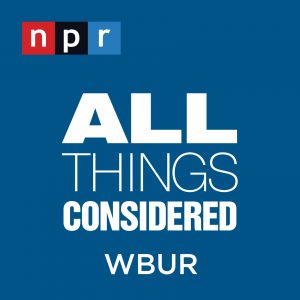On Monday, November 15, 2021, President Joe Biden signed the Infrastructure Investment & Jobs Act into law, joined by members of Congress from both parties during a White House ceremony. The legislation will inject $550 billion in new federal spending into all types of sectors including roads & bridges, train, plane, automobile, energy and utility networks. After months of tense negotiations the House of Representatives passed the legislation, which authorizes $1.2 trillion in spending over the next five years, and is considerably lower than one of the originally proposed bills that capped out around $2.3 trillion. The bipartisan bill is set to infuse much-needed funds into the country’s aging infrastructure, whose deficiencies some experts estimate currently cost the average American family over $3,000 a year.
As with most bills of this size, roughly 2,700 pages, there are both champions and opponents of the content of the bill. A Brookings Institute fellow wrote that the bill will move the country to a more inclusive, environmentally resilient and industrially competitive place. One of the 13 Republican Congresspeople who voted for the bill, Rep. David McKinley, said that the bill was “an opportunity for states like West Virginia, to get back up off the mat, and significantly improve quality of life”. Yet some critics say the bill does not go far enough, citing examples like the funds allocated for lead water pipe replacement. While the bill includes $15 billion to address the issue, experts believe it would take $60 billion to replace all lead water pipes in the U.S. The American Society of Civil Engineers, which publishes an infrastructure report card every 4 years, states that the total cost to improve the country’s infrastructure is closer to $5 trillion ($4.6T). This price tag is aligned with the ASCE’s recent report cards, from both 2013 and 2017, on which the U.S. scored a cumulative ‘grade’ of a D+ on its infrastructure.
Oregonians can expect about $1.6 billion in additional federal funds from the bill. This includes funding in key areas for the state, such as wildfire protection, internet broadband expansion, bridge replacement and repairs, as well as improving access to safe drinking water. The Oregon Department of Transportation already has identified a number of projects to put that money to use, including building a new interstate crossing over the Columbia River and renovating portions of Interstate 5. Oregon’s natural resources and wildlife are also included in the funding, which will provide some spending to help farmers, ranchers and communities deal with droughts, as well as investment in restoring wildlife habitats. Additionally, Oregon Senator Ron Wyden pointed out that the infrastructure bill will support prescription drug pricing reforms geared towards some of the most expensive drugs.
This week’s Current Events resources examine the recently passed infrastructure bill as well as some of the expected effects it will have on the United States. The resources shared provide context and various viewpoints surrounding not only the bill itself, but the process in which it was passed as well as the importance of infrastructure in a modern society.
Looking for more current events resources? Sign up at our We the Teachers Educator Resource Community page, where you can find all of our Current Events, and learn about our other programs!
Essential Questions, Vocabulary & Extend the Resources:
- What industries and sectors are being supported through the Infrastructure Investment and Jobs Act?
- How has investment in infrastructure affected the historical growth of the United States?
- In your opinion, what are the benefits and drawbacks on bills that are so long and encompassing?
- What role does the federal government play in local infrastructure decisions? In your opinion, what role should the federal government play?
- How will local communities, such as your own, be directly affected by the Infrastructure Investment and Jobs Act?
- What is the relationship between climate change and resiliency and the recently passed infrastructure bill?
- What is the process for state and local governments to receive the infrastructure funds? In your opinion, what should be the process?
Click here for a hardcopy of the Essential Questions & Infrastructure Bill Vocabulary
Click here for a hardcopy of the Extend the Resources handout with suggested lesson activities and extensions
Videos:
Podcasts:
Unpacking the $1 trillion infrastructure bill, Marketplace, November 8, 2021
Republicans Save Biden’s Infrastructure Bill, Potomac Watch, The Wall Street Journal, November 9, 2021
House Sends Massive Bipartisan Infrastructure Bill to Biden’s Desk, Pod Save America, November 9, 2021
How the House passed the $1 trillion infrastructure plan, All Things Considered, NPR, November 6, 2021
Background Resources:
Infrastructure Investment and Jobs Act of 2021, Ballotpedia
Report Card for America’s Infrastructure, American Society of Civil Engineers
When America Invested in Infrastructure, These Beautiful Landmarks Were the Result, Smithsonian Magazine
Recent Articles:
Oregon to receive $1.6 billion from federal infrastructure bill, Albany Democrat-Herald, November 8, 2021
How Oregon will spend funds from the federal infrastructure package, OPB, NPR, November 6, 2021
Biden’s infrastructure bill to become official next week. Here’s what’s in it for you, CNET, November 10, 2021
The bipartisan infrastructure bill is both historic and not nearly enough, Vox, November 9, 2021
Here’s how long it may take Biden’s infrastructure package to jolt the economy, CNN, November 9, 2021
Infrastructure bill mandates new car technology to stop drunken driving, The Oregonian, November 9, 2021
House Republicans Who Backed Infrastructure Bill Face Vicious Backlash, Yahoo! News, November 11, 2021
Why didn’t the mountain lion cross the road? Because it would get smashed by the car going 65 mph, Environment Maine, November 5, 2021
Recent Editorials:
Here’s an idea: Read the bills, The Kingsport Times, November 8, 2021
Who Won What in the Bipartisan Infrastructure Deal, The New York Times, November 6, 2021
Articles for Elementary Students:
Two million Americans still don’t have running water, new report says, Newsela, February 2, 2020
Design a Vehicle, New York Transit Museum
Help all communities get clean energy, groups say, Newsela, April 14, 2019
Economics of Infrastructure, ActivelyLearn
Lesson Plans:
What are the Key Types of Infrastructure in Our Community and the United States Today?, Stanford Global Projects Center
Unit 5 The World’s People and Products on the Move, National Museum of American History
Biden again urges Congress to pass infrastructure, reconciliation bills amid stalemate, PBS NewsHour Extra
Unit 4: Suburban Communities on the Move, National Museum of American History
The National Road: Infrastructure Winners & Losers, The Ohio State University
K-12 Curriculum, Alliance for Innovation and Infrastructure
Media & News Literacy Lesson Plans:
Media Literacy Resources – Newseum
News & Media Literacy Lessons – Common Sense
Media Misinformation, Viral Deception, and “Fake News” – University of Wyoming
Evaluating Sources in a ‘Post-Truth’ World: Ideas for Teaching and Learning About Fake News – New York Times Lessons




